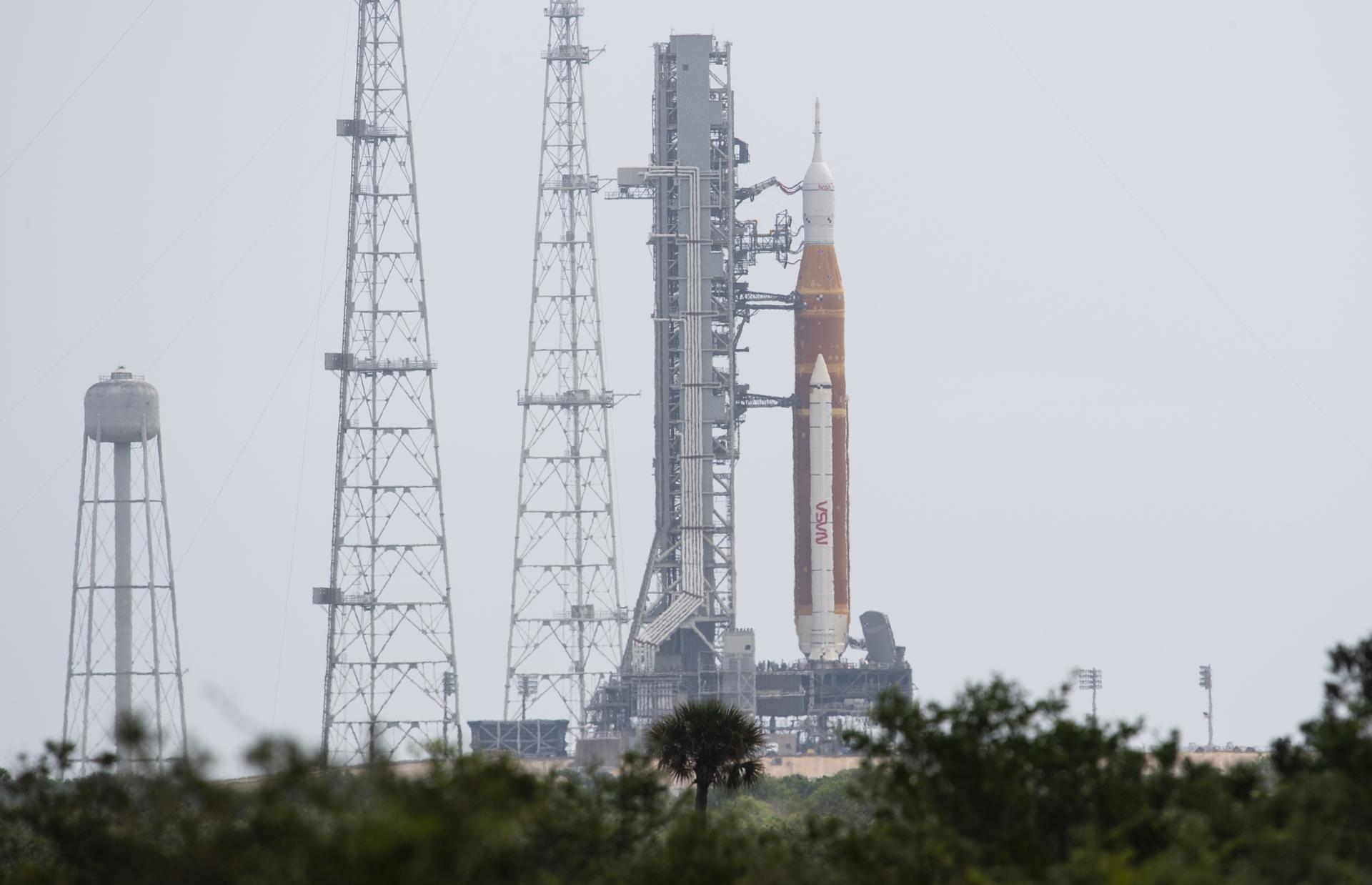Nasa successfully fuels Moon rocket on fourth try
The space agency just checked some major items off its Moon rocket test checklist, even if more work remains

Your support helps us to tell the story
From reproductive rights to climate change to Big Tech, The Independent is on the ground when the story is developing. Whether it's investigating the financials of Elon Musk's pro-Trump PAC or producing our latest documentary, 'The A Word', which shines a light on the American women fighting for reproductive rights, we know how important it is to parse out the facts from the messaging.
At such a critical moment in US history, we need reporters on the ground. Your donation allows us to keep sending journalists to speak to both sides of the story.
The Independent is trusted by Americans across the entire political spectrum. And unlike many other quality news outlets, we choose not to lock Americans out of our reporting and analysis with paywalls. We believe quality journalism should be available to everyone, paid for by those who can afford it.
Your support makes all the difference.Nasa’s fourth attempt at a crucial fueling test of its big Moonrocket was largely a success, if not a complete one.
Nasa rolled its Space Launch System (SLS) rocket and Orion spacecraft to launch pad 39B at Kennedy Space Center on 6 June in preparation for an attempted “wet dress rehearsal.” Such a process involves pumping cryogenic propellant into and out of the rocket, as well as a simulated launch countdown to test important ground and flight control systems.
“When we do a dress rehearsal,” Nasa deputy associate administrator Tom Whitmeyer said in a post-test press conference, “what we're rehearsing is the ability to get the rocket ready to fly.”
Nasa began the wet dress rehearsal shortly after 7am EDT on Monday, and successfully loaded both stages of the rocket with propellant — liquid hydrogen and liquid oxygen — for the first time. But a hydrogen leak encountered during the fueling process would lead to the simulated countdown stopping short at T-minus 29 seconds into the countdown.
“Originally, our plan was to go to T-minus 9.34 seconds,” Charlie Blackwell-Thompson, launch director for Nasa’s exploration ground systems program, said in a post-test press conference.
Despite cutting the countdown portion of the test short, Nasa officials said Tuesday the test met most of their objectives, although they didn’t spell out in great detail what elements were still outstanding.
“I would say we're in the 90th percentile in terms of where we where we need to be overall,” Nasa Artemis Moon mission manager Michael Sarafin said. “But that said, there are still some open items that we need to look at.”
The SLS and Orion are the cornerstones of Nasa’s Artemis Moon program, and the space agency plans to use them to carry astronauts back to the lunar surface in 2025, as part of the Artemis III mission. But before that, Artemis II will carry astronauts on a lunar flyby in 2023, and before that, Artemis I, an uncrewed test flight of both vehicles, must take to the skies.
In the wake of the three prior wet dress rehearsal attempts, Nasa officials noted that successful completion of the test was necessary before Artemis I could launch.
Nasa first attempted a wet dress rehearsal on 3 April, but malfunctioning fans designed to manage hazardous gasses on the rocket’s mobile launcher platform cut the test short. The second attempt on 4 April was scrubbed halfway through when a pressure valve on the mobile launcher platform malfunctioned, while the third on 14 April failed due to a liquid hydrogen leak in the connection fueling the rocket.
Nasa rolled the SLS back into the Kennedy Space Center Vehicle Assembly Building on 25 April to repair the malfunctions, while the launch windows under consideration for Artemis I slipped from dates in May, to June, July and, most recently, late August.
As of Tuesday, Nasa officials wouldn’t yet commit to a new target launch date for Artemis I.
“We need to really sit down and do everything we just talked about,” Mr Whitmeyer said, “look at the objectives, see what we accomplished, and see what additional work might be required.”
Join our commenting forum
Join thought-provoking conversations, follow other Independent readers and see their replies
Comments